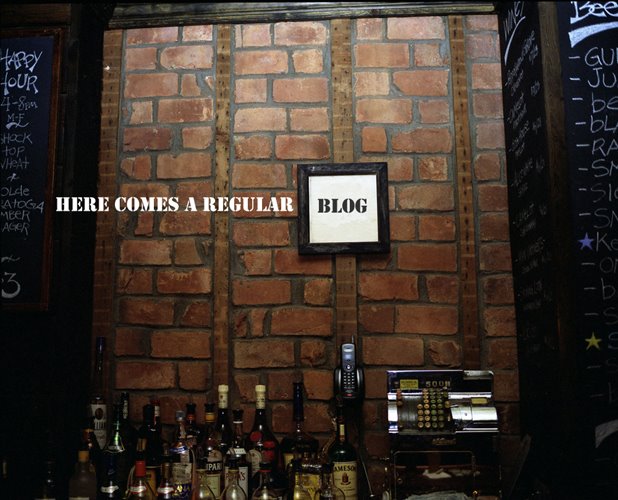There are a couple notorious types of wine drinkers…
First you have “The Wine Snob.” This person is probably an elitist, vintage Bordeaux-sipping “connoisseur,” if you will. They probably have an extensive wine collection valued at an amount that could feed a small village. They probably own monogrammed decanters, and discuss wine with an air of self righteousness. They may also possibly wear ascots.

Then at the other end of the spectrum, you have “The Wino.” This person doesn’t care at all about vintages, varietals, etc. Bring on the box wine, the Yellowtail, and the 3 Buck Chuck. If its fermented grape juice of any sort—it’s good enough for them. Sadly, this person probably also drinks their wine with ice cubes floating in it.
Everyone else is somewhere in between. They drink wine because they enjoy drinking wine. They can appreciate a nice bottle of something when it comes around, but they won’t drop a week’s pay on it. They can also go to the local wine shop, find a $12 bottle, and be totally happy with it. They can talk about wine intelligently, without sounding like a pretentious asshole. They do not, however, drink White Zinfandel, the Kool-Aid of wine. (See “the Wino.”)
“What is the definition of a good wine? It should start and end with a smile.”
-William Sokolin
We at HCAR tend to agree, and we’ll be exploring the world of wine with this philosophy in mind. It’s never a bad idea to kick things off with a glass of champagne, so thus begins our first wine profile…
~Champagne~
Champagne is composed of any combination of 3 grapes: Chardonnay, Pinot Noir, and Pinot Meunier. For Champagne to be called Champagne, it must be produced in the Champagne region of France. Anything else is technically a “sparkling wine.” Different regions may have different names for their own brands of sparkling wine, such as Cava in Spain, and Asti Spumanti in Italy.
There are 4 types of Champagne—Brut, which is the standard “dry” champagne, Extra-dry is ironically less dry than a Brut. Then you have Sec, which is sweet, and Demi-sec, which is even sweeter. Champagne can be white or pink. Pink Champagne is made by leaving the grape skins to ferment in the liquid for a short while, whereas they are completely eliminated in the normal process.
Champagne is classified as being Vintage or Non-Vintage. Vintage champagne means that all the grapes within the champagne were harvested during a single year. Vintage champagne must be aged for 3 years, and in any given year Vintage Champagne accounts for only about 10-15% of the total champagne produced. Non-Vintage champagne on the other hand, accounts for the remaining 85-90%. This type is composed of grapes from several different vintages, as opposed to a single harvest. Non-Vintage champagne tends to be much less expensive than its counterpart, and is referred to as “Classic Champagne,” because it was the only type made during the first 150 years of Champagne production.
And how did Champagne come about in the first place? Legend has it that in the mid 1600’s the Benedictine monk, Don Pierre Pérignon accidentally invented champagne when experimenting with different forms of fermentation. “Come quickly, I am drinking the stars!” is the famous quote associated with the monk’s alleged discovery. Historians now credit English scientist, Christopher Merret with “inventing” champagne 30 years before Perignon. Perignon is credited, however, for refining the Méthode Champenoise, which is the secondary in-bottle fermentation process by which champagne is made.
The taste of Champagne varies widely depending on the maker, the soil, the age, and many other factors. Champagne can be sweet, dry, nutty, fruity, minerally, chalky, creamy---pretty much anything goes. When one hears the word “mousse” it refers to the appearance of the bubbles in the glass and the feeling that they leave on the palate.
And finally, a few random fun facts…
- A quarter of all Champagne sold every year is sold in the week between Christmas and New Year’s
- A cork can escape a bottle of sparkling wine at speeds of up to 40 mph.
- Legend has it that the traditional shallow champagne glass was modeled after wax molds of Marie Antoinette’s breasts.
- Champagne is traditionally used to christen ships on their maiden voyage by smashing a bottle over the ship’s hull. If the bottle doesn’t break, it is considered to be extremely bad luck.
~Happy Champagne drinking from HCAR~
Editor's note: Due to timing and technological complications it fell upon me, the Colonel, to place Rachel's writing upon the computer web. Fear not, the lovely redheaded oenophile and I are indeed separate entities, not some monstrous scientific abomination out of Victor Von Frankenstein's dream.
.jpg)



I popped open a bottle of my finest in celebration of you fine writers starting this endeavor with me. Cheers and huzzah, Rachel!
ReplyDeleteSo if something is labeled "Chardonnay" does that mean it's entirely made from Chardonnay grapes, or mostly, or what?
ReplyDelete@JuicyMvK are you fucking serious?
ReplyDelete